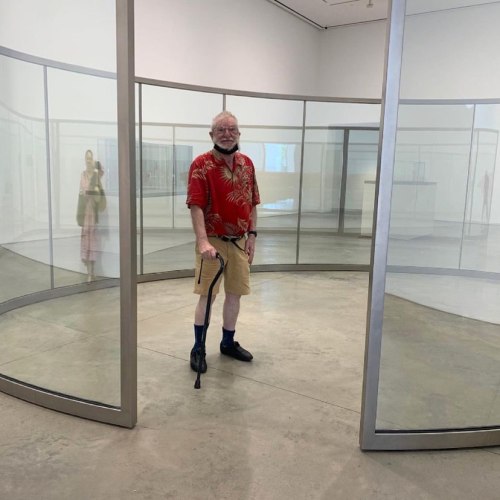
Dan Graham (1942-2022)
303 Gallery, Lisson Gallery, Marian Goodman Gallery, and Regen Projects mourn a great artist, Dan Graham, who sadly passed away on February 19th in New York. His influence over the past half century as a writer, photographer, architect, sculptor, filmmaker and performance artist is widely felt in the contemporary art world, with many of his groundbreaking endeavours in video, installation and audience participation – including such legendary and confrontational works as Performer/Audience/Mirror (1975) and Public Spaces/Two Audiences (1976) – among the first and most enduring examples ever created in those fields.
Despite his recent disavowal of Conceptual Art as a term, he was one of its earliest pioneers through early text-based works, typographic wall pieces and schematic poems, not to mention the seminal illustrated magazine essay, Homes for America (1966). He exhibited the work of his peers Donald Judd, Sol LeWitt, and Robert Smithson at the John Daniels Gallery in New York, where he was briefly the curator and director, before showing alongside these and many other Minimalists and Conceptualists during the 1960s and 70s.
The main focus of Graham’s art since the late 1970s was an ongoing series of public architectural installations, which he called pavilions, derived from geometric forms and rendered in plate glass, two-way mirror, and steel armatures. Graham intended his pavilions to function as punctuation marks, pausing or altering the experience of physical space, providing momentary diversion for romance or play, or else as places to delve into other activities, like reading or viewing videos. These deceptively simple structures recall many of the artist’s earlier experiments with perception, reflection, and refraction, but depart from them in their non-gallery setting as long-term additions to the landscape.
Graham had an encyclopedic sphere of references and wrote about everything from Dean Martin and rock music to astrology and urban architecture. He is survived by his wife, the artist Mieko Meguro. His wit, generosity and irascibility will be sorely missed by all who knew him. Our deepest sympathies are with his family and friends.